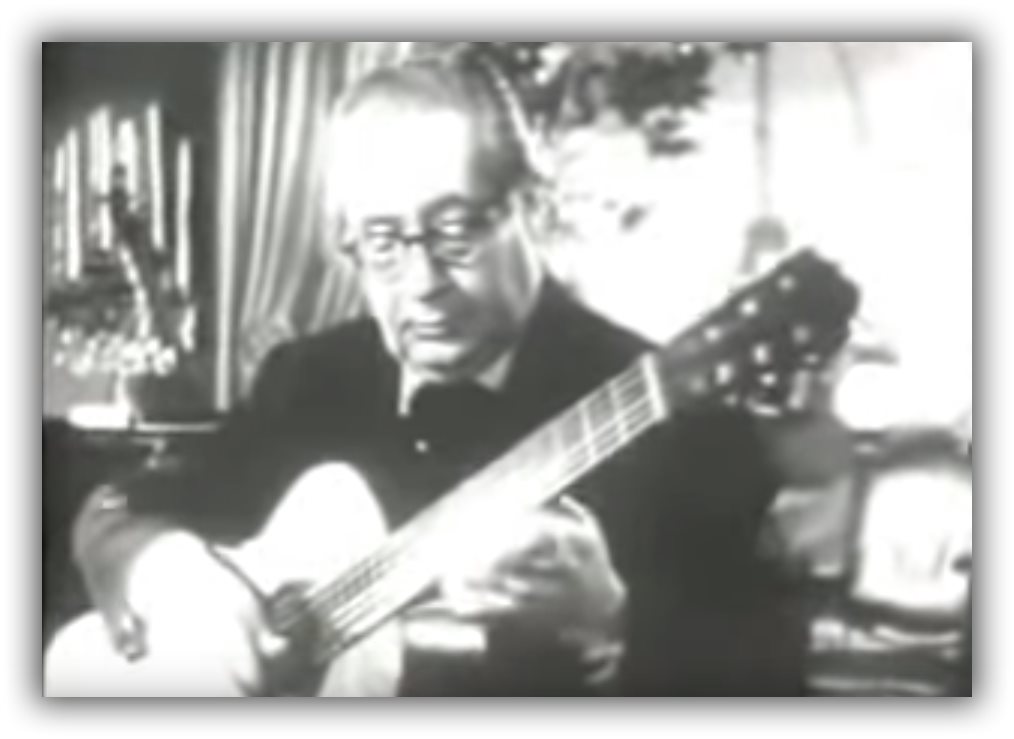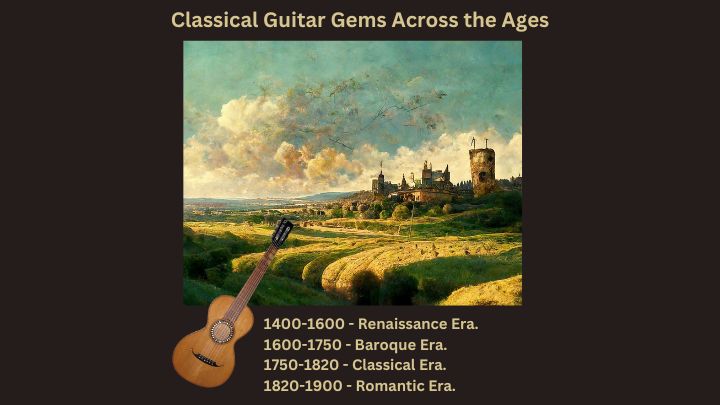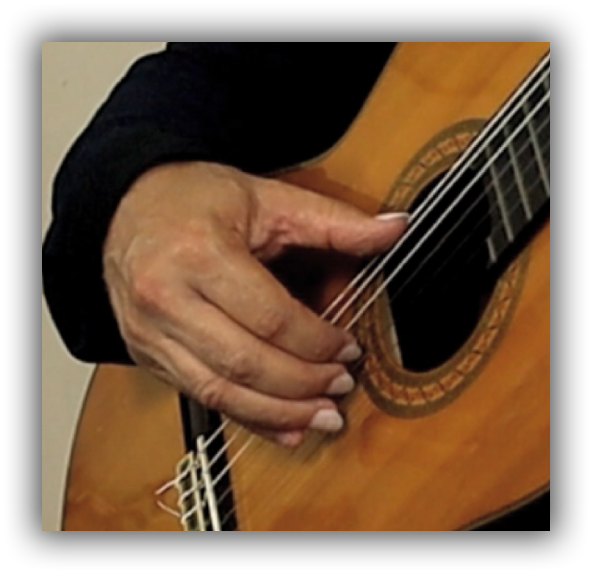- Home
- Classical Fingerstyle Portal
- 15 Actionable Guitar Lessons
- Classical Guitar Technique
- Guitar Lessons
- Beginner Lessons
- Guitar History
- The Renaissance Guitar
- Guitar Time Line
- Classical Guitar Blog
- Contact
- About Author
- Site Search
- Privacy Policy
- Site Map
- Classical Guitar Study Course 3.0
- Instant Classical Guitar Repertoire
- Classical Guitar Lessons For Beginners
Nylon String Guitar
Have you ever wondered about the allure of a nylon string guitar? This instrument, also known as the classical guitar, is hypnotically beautiful in sound, unrivaled in its warmth and richness. Unlike its steel-stringed siblings, the nylon string creates a mellower and more dimensional tone, making it a personal favorite and a beloved choice for many musicians around the globe.
On this page, you'll discover:
- How the nylon string differs from other varieties
- Choosing a nylon string that fits your skill level
- How to get lessons on the nylon string guitar
- The wide variety in how nylon string guitars are used in different genres
- When to change your strings
Speaking of the history of the nylon string guitar, its roots trace back to the early 19th century. I remember learning how Antonio de Torres, a Spanish luthier, transformed the guitar-making industry by creating a larger-bodied instrument with fan bracing patterns. This design, coupled with the advent of nylon strings in the 1940s gave birth to what we now know as the classical guitar.
How does the 'nylon string guitar' differ from other varieties?
This lies in the details. For beginners, especially, differences in construction play a crucial role in the learning process. I've noticed that nylon string guitars typically feature wider necks, providing ample room for precise finger placement—a necessity in playing complex classical pieces. On top of that, they lack a truss rod because the tension exerted by nylon strings is much less compared to steel strings.
Now, let's talk a bit about the technical specifications of
the nylon string guitar. Starting from the headstock, moving down to the neck,
the body, and all the way to the saddle and bridge. Every component has a role
to play in the production of that desirable mellow tone. For instance, the top
or the soundboard of a classical guitar, which usually crafted from cedar or
spruce, greatly influences the resonance of the guitar.
Whether you're interested in playing flamenco like Paco de Lucia or classical pieces like Andrés Segovia, the nylon string guitar lends itself to a wide range of styles. Its versatility stretches beyond classical and flamenco, intersecting jazz, folk, and various Latin styles. I've seen people fall in love with nylon string guitars because of the vibrancy they bring to each genre, especially those that demand extensive fingerpicking or intricate chord voicing.
Choose a Nylon String Guitar That Fits Your Skill Level
If you're looking to dive head-first into the world of the nylon string guitar, then picking the right one is a crucial first step. I can't emphasize enough how important it is to choose a guitar that fits your skill level, musical needs, and budget. Brands like Yamaha, Cordoba, Ibanez, and Gibson offer excellent choices. My advice here? Always try before you buy, as it's the only way to ensure that it feels comfortable in your hands.
As with any instrument, maintenance is key. A well-kept nylon string guitar not only sounds better but also lasts longer. Regular cleaning, changing of strings as per your playing routine, and storing in a proper case with a humidifier are standard procedures. However, I've found that the actual setting of the environment where you store the guitar also makes a difference.
Let’s take a moment to explore the artists who've brought fame for this beautiful instrument. From Andrés Segovia, the grandfather of classical guitar, to modern maestros like John Williams and Julian Bream, these artists have redefined the nylon string guitar's potential. Their performances spark a sense of admiration and inspiration.
We've touched upon buying decisions, maintenance, and care. But what about actually playing the guitar? To learn classical guitar, you can dive into countless educational resources, both online and offline. YouTube, for example, boasts a sea of tutorials and lessons that can aid you along your musical journey. I have online lessons myself and you can see them here…
This is possibly my best online lesson series yet!
Click on the 'New Product Alert' below to find out about this new course...
Nylon String Guitar - But wait, there’s more!
Did you know about the fingerstyle pattern? This refers to the right-hand technique, which is vital in classical guitar playing. Arpeggios, free strokes, rest strokes, rasgueado...
The list goes on! Various techniques allow for different expressions and tonal ranges.
It’s intriguing how some of the simplest-looking pieces can often be the most challenging to play, isn't it? Classical music can be especially complex, due to intricate finger patterns and chord progressions. But the reward? Utterly captivating music that is an absolute delight to the ears.
Now, here's something I often stress when discussing nylon string guitars. Just because they're known as classical guitars doesn't mean they're restricted to classical music alone. This reflects in the different types of nylon string guitars, like flamenco guitars, which have a lower action and are braced to make them punchier and brighter.
I also know that the fusion of nylon string guitars into other music genres yielded some unforgettable music. Take Rodrigo y Gabriela. Their music is a blend of classical, flamenco, and rock. A phenomenal example of the adaptability of the nylon string guitar!
Acquiring a nylon string guitar is the first step into a rich cultural and musical heritage, don't you agree? The thing I like about nylon string guitars is that they have taken years, even centuries, to perfect, so owning one is to hold a piece of human history.
For those who are new to the classical guitar world, a multitude of online communities and forums exist to guide you along your journey. Whether it's a seemingly insignificant question about tuning or a need for constructive feedback, these communities are priceless resources.
Nylon String Guitar - When to change the strings?
Getting back to caring for these beauties, one common question is, when should I change the strings? I often advise swapping them out when they start to sound dull. Playing a lot? Change them more frequently. Less frequent player? Every couple of months should do.
The materials used in nylon string guitars contribute to their unique sound quality. For instance, solid woods improve with age, becoming more resonant as they mature. Now, isn't that a beautiful thing to consider, that your guitar's voice could grow and change alongside your own?
You'd be surprised how much of an impact a quality set of strings can have on your guitar's sound. The transformation can be profound. High-tension strings increase volume and higher overtones, while softer tension can make the guitar easier to play.
Nylon String Guitar - Summing Up...
A critical part of learning to play the nylon string guitar is understanding its individual components and how they contribute to the overall sound. From the woods used in its construction to the strings themselves, every small detail matters.
Feeling inspired yet? Wait until you explore some notable performances on YouTube. Listening to a skilled classical guitarist is a captivating experience. And with their painstakingly high-definition videos, you might just feel like you've been transported to a front-row seat at a concert!
I've seen beginners transform into competent players through consistent practice and a passion for learning. So, whether you're an absolute beginner or a seasoned player, diving into the world of nylon string guitars can open up a new universe of musical exploration.
Lastly, embracing the nylon string guitar means stepping into a world of musical diversity. The strings strumming under your fingertips bringing forth a myriad of tones—from the deep, rich bass to the clear, singing trebles it’s a journey unlike any other. Are you ready to embark on the adventure that is the nylon string guitar?
Nylon String Guitar - Page Take Away...
- The allure of the nylon string guitar, also known as the classical guitar, lies in its hypnotically beautiful and unrivaled sound, characterized by warmth and richness.
- Antonio de Torres, a Spanish luthier, played a pivotal role in its early 19th-century roots. Notable for wider necks and absence of a truss rod, these guitars are ideal for beginners.
- Technical specifications, maintenance tips, and the influence of artists like Andrés Segovia and John Williams are explored.
- The page emphasizes the versatility of nylon string guitars, spanning classical, flamenco, jazz, and beyond.
- The importance of choosing the right guitar, playing techniques, and online learning resources is highlighted.
- The fusion of nylon string guitars into various genres is exemplified by Rodrigo y Gabriela.
- The page concludes by inviting readers to explore the cultural heritage of nylon string guitars and the profound impact of quality strings and individual components on sound.
- It encourages beginners and seasoned players alike to embark on the musical adventure offered by the nylon string guitar.
Recent New Pages:





